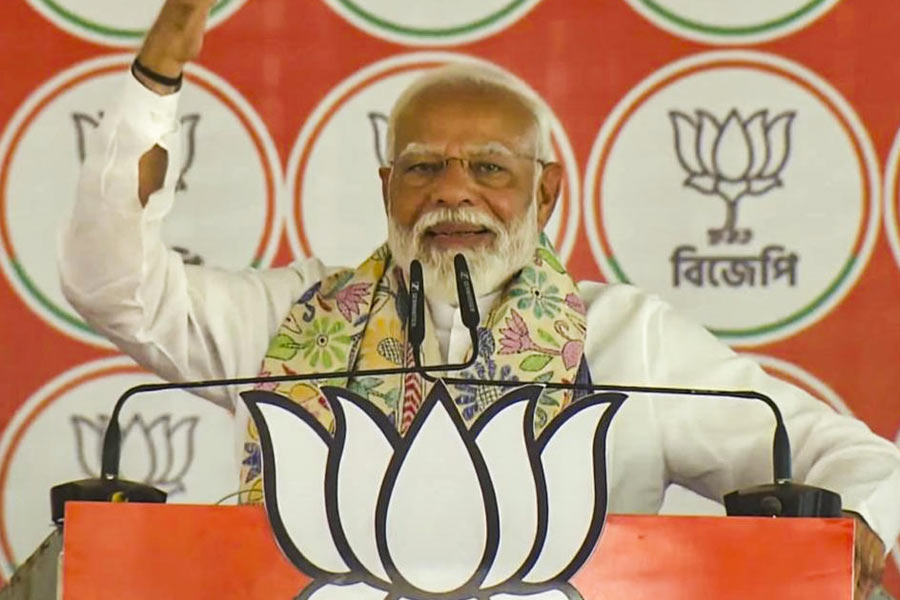Alexandra Bachzetsis’ debut solo in India, Notes on Becoming, at Experimenter, Ballygunge Place, offered insight into the artist-choreographer’s decade-long practice. The exhibition showcased numerous photographs, videos, and air tracks titled Catapult and a publication spread, An Ideal for Living/Manual for Desire. Through her body, Bachzetsis expressed a range of ideas and emotions, serving as a conduit bridging theatre, choreography, art and society.
Her live performance, Perfect (picture), allowed us a closer view of her strategies of cultural citation and appropriation, where she crafted body choreographies that delve into how popular culture shapes gesture, expression, identity, and desire, reflecting on the perpetual process of constructing and reconstructing our bodies and identities.
She wore high-waisted denim jeans, nude stiletto heels, and a plain white t-shirt, exuding curated femininity in a setting reminiscent of a Guess ad photo-shoot. As she enacted choreographed sequences drawn from diverse cinematic and photographic contexts, including Jane Fonda’s exercise tapes and traditional norms of femininity, a deliberate subversion of marianismo became evident in her movements and gestures. Laden with cultural significance, they challenged gender and identity standards.
Yet, as these deeply rooted gestures underwent deconstruction, rearrangement, and iteration during the performance, they were transformed into an abstract language that maintained an uncomfortable distance from both the audience and the societal context. This detachment was particularly evident amidst the spontaneous infusion of Bengali and Hindi songs and advertisements from a live radio that added new layers of meaning to the performance, resonating more intimately with the audience than with the performer herself.
At this point, the body moved beyond the body politic of the location and brought home the point that assonance and dissonance are integral to all cultural dialogues. Cross-cultural in this instance and intra-cultural, as in the famous 1988 jugalbandi between the painter, M.F. Husain, and the vocalist, Bhimsen Joshi, of which a contemporary reviewer wrote, “one wonders whether the audience delighted their ears or their eyes. Or whether the surfeit of sight and sound proved too much.”











